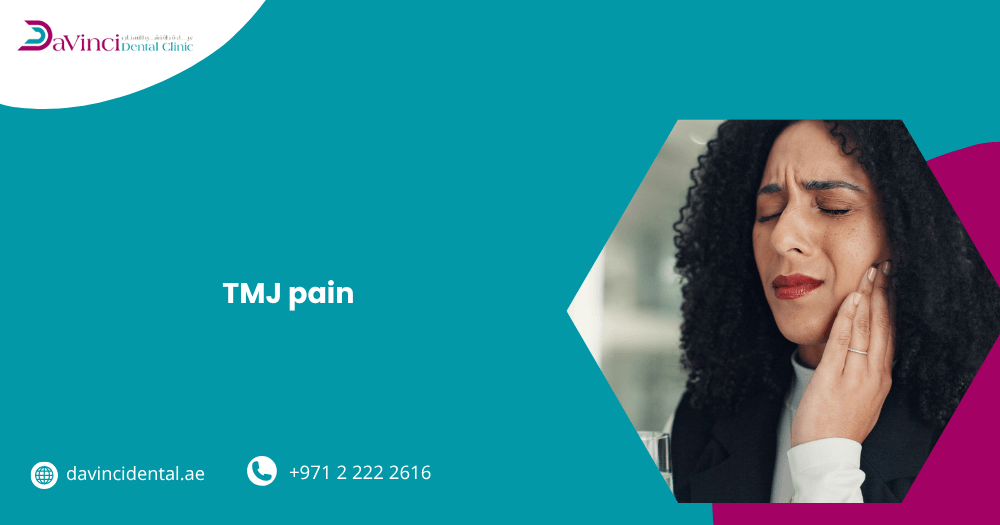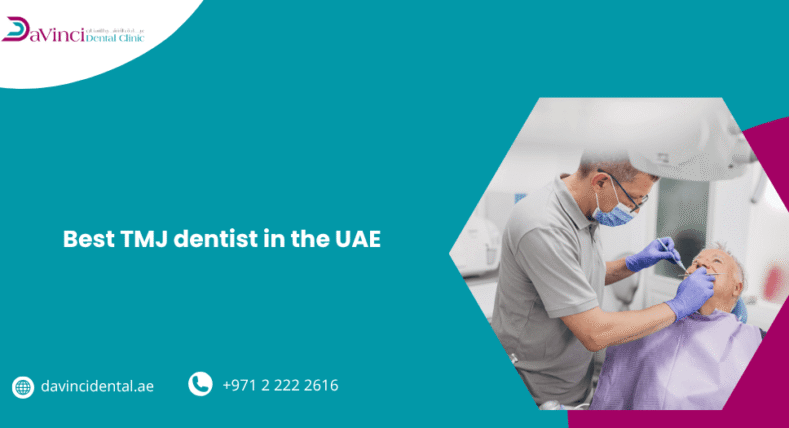Your ability to eat, speak, and even sleep comfortably can be impacted by TMJ pain, which goes beyond simple jaw discomfort.
Your jawbone and skull are connected by the temporomandibular joint (TMJ), which is essential for everyday movements like speaking and eating. The jaw and face may experience chronic discomfort, tension, and stiffness if this joint is strained or misplaced.
In this article, we’ll explain what TMJ discomfort is, the most typical signs to watch out for, the many kinds of TMJ problems, and the pros and cons of the various treatment options. This will help you manage your condition and regain comfort in your daily life.
Table of Contents
What Is TMD & TMJ Pain?
The jawbone and the temporal bones of the skull are joined by the temporomandibular joint (TMJ), which functions as a hinge.
This joint enables you to move your jaw side to side and up and down to help with chewing, talking, yawning, and other tasks. Problems with your jaw and the muscles that regulate it are known as temporomandibular disorders (TMD).
TMJ pain may be the result of issues with the jaw’s muscles or joint components. TMJ problems can be brought on by misaligned teeth, jaw injuries, or dysfunction of the head and neck muscles, hip alignments, or orofacial muscles.
Your teeth may become more clenched and ground down as a result of these issues, putting undue strain on your joints.
What Are The Common TMJ Pain Symptoms?
TMJ pain can manifest in the form of several symptoms, which is why it’s important to get a diagnosis from your dentist.
Here are some symptoms of TMJ pain:
-
Headaches: They can be in the forehead, temples, migraines, or sinus area.
-
Mouth and Teeth: TMJ can cause enlarged tonsils, frequent cold and cough, daytime or nighttime clenching & grinding, gum recession, open bites and cross bites, and crooked teeth.
-
Ears: You might feel hissing, buzzing, or ringing, ear pain, itching in the ears, or vertigo and dizziness.
-
Eyes: There could be pain behind the eyes.
-
Jaw: You might not be able to open your jaw completely, feel clicking or popping, experience pain in cheek muscles, or have your jaw deviate when opening or closing.
-
Neck, shoulder, and back: There might be stiffness, pain, or forward head and neck posture, or rolled shoulders
-
Arms and legs: There might be tingling and numbness in the arms or limb length discrepancy.
What Are The Different Types of TMJ Disorders?
Disk displacement with reduction, disk displacement without reduction, and myofascial pain condition are the three categories of TMJ problems.
Myofascial Pain Condition
The most prevalent kind of TMJ issue is myofascial pain disorder, which is marked by soreness and discomfort in the muscles.
Disk Displacement with Reduction
Disk displacement with reduction happens when the disk, which is the little cushion that sits between the joint’s ball and socket, shifts and then returns to its original position on its own.
Disk Displacement Without Reduction
When the disk shifts but does not automatically return to its original position, this is known as disk displacement without reduction. Additional issues, including joint injury or popping and clicking sounds while opening and shutting the mouth, might result from this kind of disease.
Pros and Cons of TMJ Treatment
There are many different treatments available for TMJ treatment in Davinci Dental Clinic, and each one has its own pros and cons.
Typical treatments for TMJ disorders include:
-
Medication: Anti-inflammatory medicines, muscle relaxants, and painkillers can all be useful in the treatment of TMJ. However, these drugs should be taken carefully because they might have negative effects.
-
Physical therapy: To help you manage your TMJ discomfort, a physical therapist can give you stretches and exercises. Physical treatment is frequently quite helpful, but it can be costly and time-consuming.
-
Home treatments: Ice packs, heat packs, jaw exercises, and relaxation techniques are some easy home remedies that can help reduce TMJ pain, but they are not useful in the long run.
-
Foods: A variety of foods, such as dark leafy greens, seafood, and yogurt, that are high in magnesium, omega-3 fatty acids, and probiotics can help you find relief from TMJ symptoms. However, maintaining a specific diet is not an easy option.
-
Surgery: This is often only suggested in cases where no other treatments have worked. Although surgery is uncomfortable and has a risk of side effects, it can be highly successful.
Conclusion
Your everyday comfort can be significantly affected by TMJ discomfort, which can make it difficult to do basic tasks like speaking, eating, or even smiling.
Effective management of TMJ pain and restoration of normal jaw function can be achieved in a variety of methods, including medication, physical therapy, lifestyle modifications, and surgery.
If you’re struggling with persistent TMJ pain, don’t ignore the signs. You can avoid issues and restore your comfort and confidence in your day-to-day activities with an early diagnosis and expert care.
Finding the ideal strategy to reduce your discomfort and enhance your general health can be achieved by speaking with a skilled dental professional, such as those at Davinci Dental Clinic.
Read More: TMJ dentist in Abu Dhabi.
Frequently Asked Questions
What type of dentist is best for TMJ?
A physician who specializes in treating diseases of the temporomandibular joint is known as an oral and maxillofacial surgeon. However, there are no specialists in medicine or dentistry who are assigned to treat TMJ patients.
How to stop TMJ pain fast?
Depending on the type of TMJ symptoms, you can use either heat or ice to relieve them. Steer clear of nail biting, gum chewing, and teeth clenching. Maintain proper resting jaw posture by keeping your jaw relaxed, your teeth apart, and your tongue softly resting on your palate. Use mouth guards or oral splints to maintain the correct posture.
What is the newest treatment for TMJ?
One of the newest and most promising treatments for TMJ/TMD is Botox injections. Botox has demonstrated impressive efficacy in reducing jaw discomfort and muscular strain associated with TMJ/TMD, despite its frequent association with cosmetic operations.




